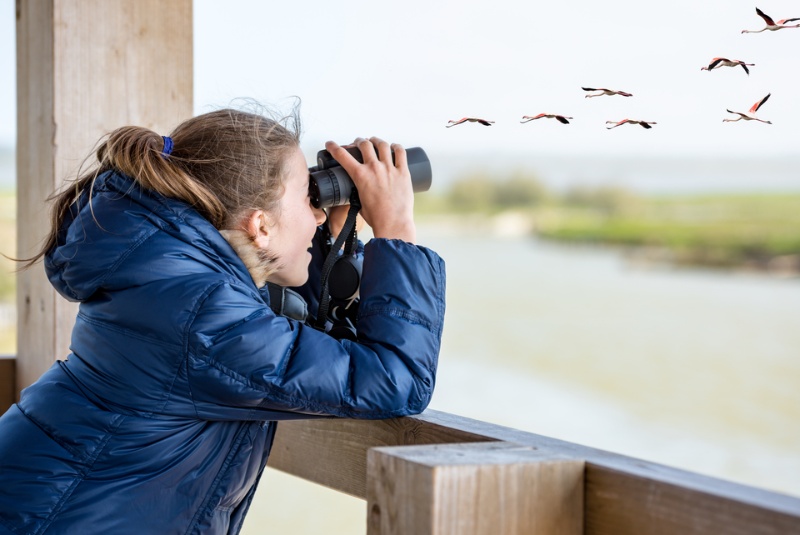Bird watching is a captivating hobby that connects people with the beauty and intricacies of nature. However, to fully immerse in the experience and appreciate the vivid details of birds in their natural habitats, having the right pair of binoculars is crucial. This guide aims to help you navigate through the myriad of options available in the market to find the perfect binoculars tailored to your bird-watching adventures.
Understanding Magnification and Objective Lens Size
The specifications of binoculars are often represented by two numbers, for example, 8x42. The first number indicates the magnification power, showing how many times closer the subject appears than with the naked eye. The second number refers to the diameter of the objective lens in millimeters, which determines how much light can enter the binoculars, affecting brightness and clarity of the image. For bird watching, a magnification of 8x to 10x is generally preferred, as it offers a good balance between close-up detail and a wide field of view. Binoculars with a higher magnification provide closer views but can be more challenging to hold steady, making them less suitable for some users. The objective lens size of around 42mm is ideal for most bird-watching conditions, providing bright images in low light conditions without being too bulky or heavy.
Consider the Field of View
The field of view (FOV) is the width of the area you can see through the binoculars at a certain distance, typically measured in feet at 1,000 yards or meters at 1,000 meters. A wider FOV is advantageous for bird watching as it makes it easier to spot birds, especially those that are moving. However, there's a trade-off, as binoculars with higher magnification tend to have a narrower FOV. When choosing binoculars, consider what's more important for your bird-watching needs: being able to see more detail on a single bird or having the ability to observe as much of the surroundings as possible.
Importance of Optics Quality
The quality of the optics is crucial for producing sharp, clear, and bright images. High-quality lenses and prisms can significantly enhance your bird-watching experience. Look for binoculars that feature multi-coated lenses, which reduce reflection and maximize light transmission. Additionally, binoculars utilizing BaK-4 prisms are superior because they have a higher refractive index than BK-7 prisms, resulting in brighter and sharper images. While binoculars with high-quality optics tend to be more expensive, they are a worthwhile investment for avid bird watchers, providing stunning visual clarity and detail.

Weight and Comfort
Comfort and ease of use are important considerations, especially during long bird-watching sessions. The weight of the binoculars is a key factor; lighter models are easier to hold for extended periods, reducing arm fatigue. Additionally, consider the ergonomics of the binoculars. Models with a comfortable grip and easy-to-reach focus wheels can enhance your bird-watching experience. Some binoculars also come with adjustable eyecups, making them more comfortable for people who wear glasses.
Weather Resistance
Bird watching often involves spending time outdoors in various weather conditions. Therefore, selecting binoculars that are waterproof and fog-proof is essential. Waterproof binoculars are sealed to prevent moisture, dust, and debris from entering, while fog-proof binoculars are filled with nitrogen or argon gas to prevent internal fogging due to temperature changes. These features ensure that your binoculars remain functional and durable, even in challenging environmental conditions.
Budget Considerations
Binoculars come in a wide range of prices, from budget-friendly options to high-end models. It's important to determine your budget beforehand and find the best quality within your price range. While it may be tempting to opt for the cheapest option, investing in a good pair of binoculars can significantly enhance your bird-watching experience. Mid-range to high-end models often offer better optics, durability, and comfort. However, there are also some excellent budget-friendly options that provide good value for beginners or casual bird watchers.
Making the Most of Additional Features
When selecting binoculars for bird watching, consider the value of additional features that can enhance your viewing experience. Features like image stabilization can counteract hand tremor and movement, providing a steadier image, especially at higher magnifications. Some binoculars also offer built-in rangefinders or GPS, which can be particularly useful for outdoor enthusiasts who wish to note the exact location of their sightings. While these features may increase the price, they can also significantly enhance the usability and enjoyment of the binoculars, making them worth the investment for serious bird watchers looking for the best possible viewing experience.
Try Before You Buy
If possible, test different pairs of binoculars before making a purchase. This allows you to get a feel for the weight, comfort, and usability of the binoculars, as well as to compare the clarity and brightness of the images they produce. Visit stores that specialize in optics or attend bird-watching events where vendors may allow you to try out their products. Personal experience can make a significant difference in finding the perfect pair of binoculars for your needs.
Choosing the right pair of binoculars is a pivotal step in enhancing your bird-watching experience. By considering factors such as magnification, objective lens size, field of view, optics quality, weight, comfort, weather resistance, and budget, you can find a pair that suits your specific needs and preferences. Remember, the best binoculars are the ones that you feel comfortable using, allowing you to fully immerse in the beauty of bird watching. Take the time to research and try different models, and you'll be rewarded with countless hours of enjoyment exploring the avian world.




